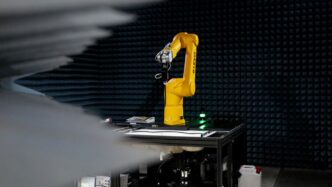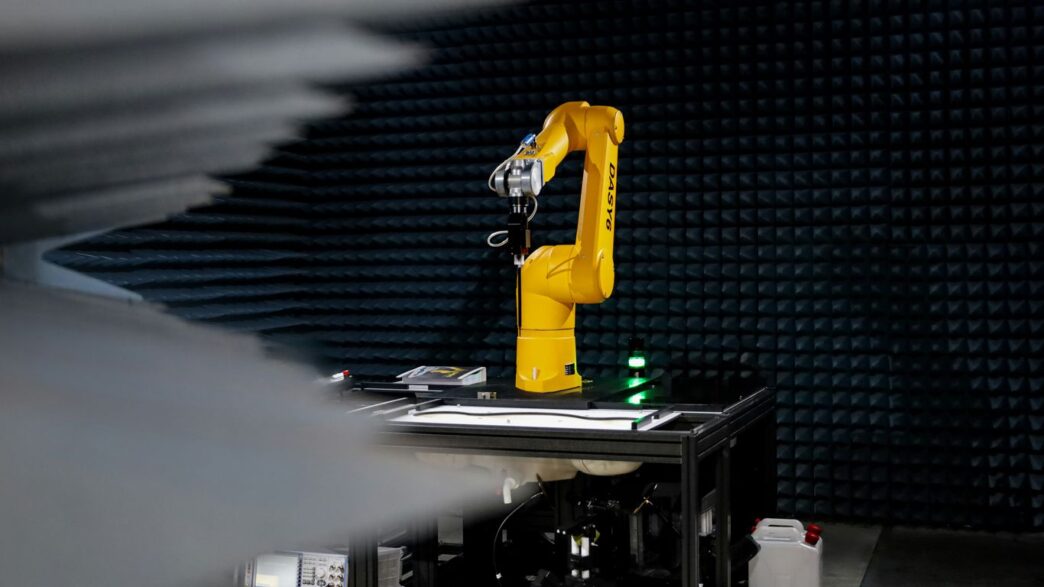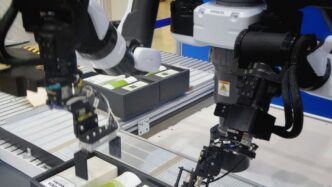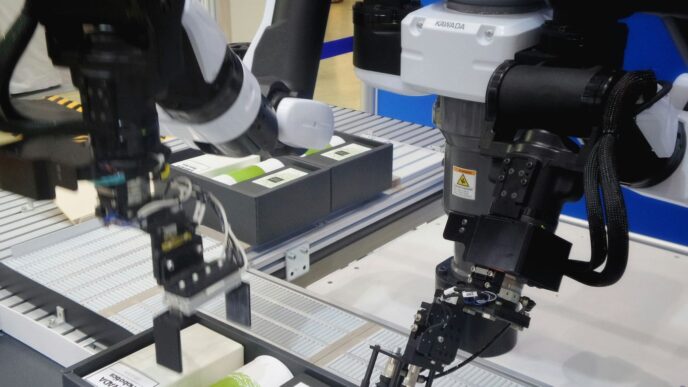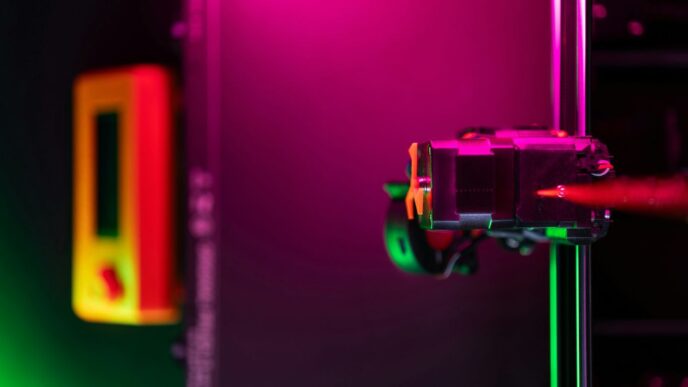The Enduring Strength of Metals in Robotics

When you picture a robot, chances are you’re thinking of gleaming metal parts working together. That’s not too far off, because metals have been the foundation of robotics since the very beginning. They give robots the muscle to lift heavy things, the toughness to handle rough jobs, and they can be shaped into countless intricate pieces.
Precision Components For Movement
Robotic joints, arms, and the bits that make them move – actuators – need to be incredibly precise. We’re talking about tolerances so small that even a tiny mistake can mess up a robot’s entire program. That’s why metals like titanium and stainless steel are so popular here. They’re strong, don’t rust easily, and can be machined to meet those super-tight specs. Think of the robotic arms on an assembly line, moving with speed and accuracy that humans just can’t match. That level of performance relies heavily on the exactness that metal fabrication allows.
Lightweight Durability For Mobility
For robots that need to move around, like those little vacuum cleaners or delivery bots, weight is a big deal. Aluminum alloys are a go-to material because they offer a good balance. You get a structure that’s strong enough to hold everything together and withstand some bumps, but it’s also light enough that the robot can zip around without using too much power. It’s a sweet spot that makes mobile robotics practical.
Corrosion Resistance And Strength
Robots often work in tough environments, whether it’s a dusty factory floor, a humid outdoor setting, or even inside the human body for medical applications. Metals like stainless steel and titanium are fantastic because they resist corrosion, meaning they won’t break down from rust or chemical exposure. This durability is key to a robot’s longevity and reliability. Plus, their inherent strength means they can handle the stresses of constant operation without failing. This combination of resilience and robustness is why metals remain a go-to choice for so many critical robotic applications.
Beyond Traditional Metals: Exploring Advanced Materials

While metals have been the go-to for a long time in robotics, things are changing. We’re seeing some pretty cool new materials pop up that are letting robots do things they couldn’t before. It’s not just about making them stronger; it’s about making them lighter, more flexible, and better at handling specific jobs.
Titanium’s High Strength-To-Weight Ratio
Think about robots that need to move fast or lift heavy things without being weighed down. That’s where titanium comes in. It’s incredibly strong, almost as strong as steel, but it’s way lighter. This makes it perfect for robot arms that need to reach far or for mobile robots that need to be quick on their feet. It’s like giving a robot the muscles of a bodybuilder but the lightness of a gymnast. Because it doesn’t rust easily and can handle high temperatures, it’s also a good choice for robots working in tough environments, like deep-sea exploration or even in some medical applications where it needs to be safe inside the body.
Copper Alloys For Electrical And Thermal Needs
Robots have a lot of electronics, and those electronics need to get power and get rid of heat. Copper alloys are fantastic for this. They’re excellent at conducting electricity, so they’re used in wiring and circuits to make sure signals get where they need to go quickly and reliably. Plus, they’re great at moving heat away from sensitive parts, like motors and processors. This helps keep the robot from overheating, which is super important for its performance and lifespan. You’ll find copper alloys in places where electrical connections need to be solid and where heat management is a big deal.
Liquid Metal Circuitry For Flexibility
This one sounds like science fiction, but it’s becoming a reality. Liquid metal, often gallium-based alloys, can actually conduct electricity while remaining fluid. This opens up a whole new world of possibilities for flexible and adaptable robots. Imagine circuits that can bend, stretch, or even reshape themselves. This could lead to robots with skin-like sensors that conform to surfaces or internal systems that can reconfigure on the fly. It’s a game-changer for robots that need to interact with unpredictable environments or perform delicate tasks where rigid components just won’t cut it.
The Rise Of Plastics And Polymers In Robot Design
You know, when we think about robots, we often picture those sleek, metallic machines. But lately, there’s been a big shift, and plastics and polymers are stepping into the spotlight. They’re not just for toys anymore; these materials are making robots lighter, more flexible, and often, a lot cheaper to build. It’s pretty neat how engineers are finding new ways to use them.
Acetal For Dimensional Stability And Low Friction
Acetal, sometimes called Delrin, is a real workhorse when precision is key. It doesn’t warp easily, even with changes in temperature or moisture, which is a huge deal for moving parts. Plus, it’s super slippery, meaning less friction. Think gears that turn smoothly for ages or bearings that don’t wear out quickly. It’s a go-to for parts that need to do the same thing over and over without messing up.
Nylon For Toughness And Wear Resistance
Nylon is like the tough guy of the plastic world. It can take a beating and keep on going. It’s strong, but it also has a bit of give, which is great for parts that might get bumped around. You’ll find it in all sorts of places, from the gears inside a robot’s arm to the outer casings that protect its electronics. Its resistance to wear means it holds up well even when things are constantly rubbing against it.
Polycarbonate For Impact Resistance And Transparency
Polycarbonate is pretty cool because it’s both tough and clear. This makes it perfect for robot parts that need to be strong but also let you see what’s going on inside. Imagine protective shields on a robot that need to stop something from hitting the delicate parts, or clear housings for sensors. It’s a solid choice when you need durability without adding a ton of weight, and you want to keep an eye on things.
PEEK For High-Performance Applications
Now, PEEK (Polyether ether ketone) is where things get serious. This stuff is built for the really demanding jobs. It can handle super high temperatures and all sorts of nasty chemicals without breaking down or losing its shape. While it costs more than your average plastic, it’s used in places like aerospace or medical robots where failure just isn’t an option. It’s the material you pick when you need top-tier performance under extreme conditions.
Innovative Composites And Hybrid Structures
Carbon Fibre Composites For Strength And Rigidity
When we talk about making robots lighter and stronger, carbon fibre composites are a big deal. Think of it like this: you’re taking super thin threads of carbon, weaving them together, and then binding them with a special plastic or resin. The result? Parts that are incredibly stiff and tough, but way lighter than metal. This is huge for robots that need to move fast or fly, like drones or those agile robotic arms you see in factories. They can handle a lot of force without bending or breaking, which means robots can be more precise and use less energy. The downside is that making things out of carbon fibre can be more complicated and costly than just stamping out a metal part, but for high-performance robots, it’s often worth it.
Hybrid Soft And Hard Robot Designs
Robots aren’t just rigid metal boxes anymore. A lot of cool work is happening with hybrid designs that mix hard parts, like a robot’s skeleton or joints, with soft, flexible materials. This is inspired by nature – think of how an octopus has a firm beak but a super bendy body. These hybrid robots can do things that purely rigid robots can’t. They can gently pick up delicate objects, squeeze through tight spaces, or move in ways that are much smoother and safer around people. It’s like giving robots a bit of a ‘feel’ for the world, making them more adaptable to different jobs and environments. This often involves a team of different experts, like mechanical engineers working alongside biologists, to figure out how to best combine these contrasting materials.
Inflatable Systems As Soft Robots
Another fascinating area is using inflatable structures to create robots, especially for soft robotics. Imagine a robot that’s basically a balloon, but one that can change shape and move when you pump air into different sections. These are great for tasks where you need a robot to be really gentle or to conform to irregular shapes. They can be used for things like soft grippers that can pick up fruit without bruising it, or even for robots that can help people move or provide support. Because they’re mostly air when deflated, they can be packed down small and then deployed when needed, which is handy for space exploration or rescue missions. It’s a clever way to create robots that are lightweight, adaptable, and can interact with their surroundings in a less forceful way.
Integrating Materials For Enhanced Functionality
So, we’ve talked a lot about the individual materials robots are made from, but how do they all come together? It’s not just about picking the strongest metal or the most flexible plastic; it’s about smart combinations. Think of it like building a really complex LEGO set – you need different bricks for different jobs.
Sensor Housing and Protective Casings
Robots need to sense the world, right? That means sensors for seeing, hearing, and feeling. These delicate components need protection. Often, this involves using materials that are tough but also lightweight. For instance, a robot’s ‘eyes’ might be housed in a precisely machined metal casing, while its ‘skin’ could be a flexible polymer. This blend means the sensors are safe from bumps and environmental factors, but the robot itself doesn’t become too heavy or rigid. It’s about making sure the robot can interact with its surroundings without breaking its own sensitive parts.
Efficient Cooling Systems For Performance
When robots get busy, especially those with powerful processors crunching a lot of data, they can get pretty warm. Too warm, and things start to go wrong, performance drops, or components can even get damaged. This is where clever material choices come in for cooling. Metal, especially aluminum or copper, is fantastic at drawing heat away. You’ll often see robots with fins or heat sinks made from these metals. They act like radiators, dissipating the heat so the robot can keep working at its best. Sometimes, these cooling elements are integrated directly into the robot’s frame or casing, using the robot’s structure itself to help keep things cool.
Biomimicry And Bio-Inspired Designs
This is where things get really interesting. Scientists and engineers are looking at nature for inspiration. How does a bird fly so smoothly? How does an octopus move its tentacles with such grace? By studying these natural systems, they’re designing robots that mimic these movements and structures. This often means combining rigid parts, maybe made of metal or carbon fiber for support, with soft, flexible materials that allow for more natural, fluid motion. Imagine a robot arm that can gently pick up an egg – it needs both strength and a delicate touch, achieved through a smart mix of materials. It’s about making robots that don’t just work, but work like living things, adapting and moving in ways that feel more natural and less mechanical.
So, What’s Next?
It’s pretty wild to think about how far robots have come, right? We started with clunky metal machines, and now we’re seeing them made from all sorts of materials, even stuff that acts like living things. From the tough metals that give them strength to the flexible plastics and composites that let them move in new ways, the building blocks of robots are changing fast. This means robots can do more, be more precise, and even go places we can’t. It’s exciting to imagine what they’ll be made of next, and what new jobs they’ll be able to do for us.

